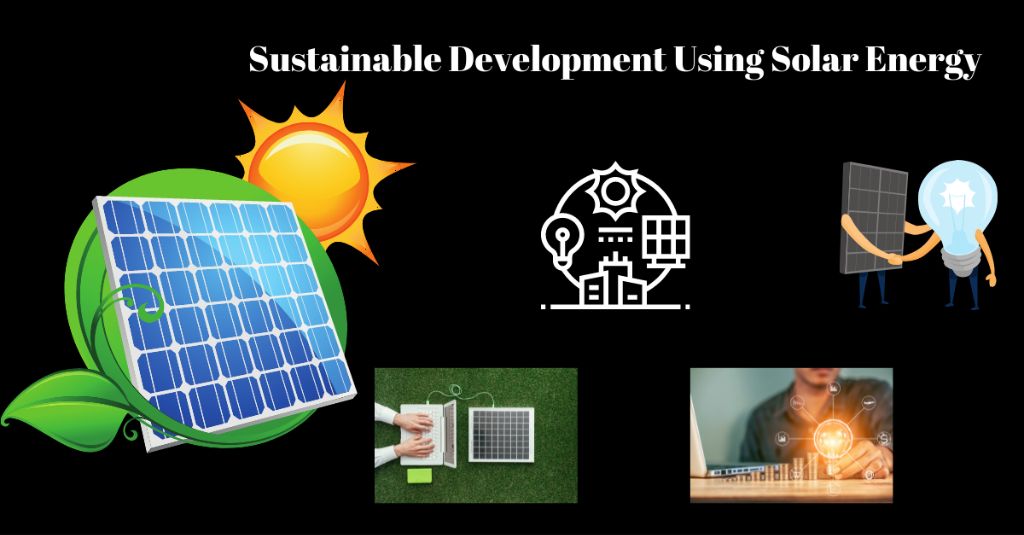Why Is Solar Energy An Example Of Sustainable Development?

Sustainable development is defined as “development that meets the needs of the present without compromising the ability of future generations to meet their own needs” (International Institute for Sustainable Development). It aims to balance economic growth, environmental protection, and social equity. Sustainable development is crucial for ensuring the long-term viability of human civilization.
Solar energy is an excellent example of sustainable development because it provides clean, renewable power without depleting finite resources or generating pollution. This article will examine how solar energy promotes environmental sustainability, spurs economic growth, and improves social welfare.
Topics covered will include the environmental benefits of solar power, how it creates economic opportunities, its role in social development, current challenges, government support programs, private sector growth, and global success stories. Together this will illustrate why solar energy is a leading model of sustainable development worldwide.
Solar Energy Basics
Solar energy works by converting sunlight into electricity through the use of photovoltaic cells or solar thermal collectors. Photovoltaic cells are made from materials like silicon that release electrons when exposed to sunlight, generating a flow of electricity (Sunrun, 2021). Solar thermal collectors absorb heat from the sun to heat up water or other fluids that can be used for electricity generation, heating, or hot water.
There are three main applications for solar power: residential, commercial, and utility-scale. Residential solar panels are installed on rooftops or the ground near people’s homes to generate electricity for the home. Commercial solar provides power for businesses, warehouses, office buildings, and more. Utility-scale solar consists of large solar farms that provide electricity to the utility grid on a much larger scale.
Environmental Benefits
Solar energy is considered a clean and renewable energy source with major environmental benefits. Unlike fossil fuels, the use of solar energy produces zero greenhouse gas emissions that contribute to climate change and air pollution. According to the EPA, the electricity sector accounted for 25% of U.S. greenhouse gas emissions in 2019, with coal and natural gas as the largest contributors. The greenhouse gases released when burning fossil fuels for electricity include carbon dioxide, methane and nitrous oxide.
With solar photovoltaic technology, sunlight is converted directly into electricity without any air emissions. This makes solar energy an ideal solution to reduce air pollution and meet clean energy goals. Solar power plants also do not require the extraction, processing, transportation or combustion of fuels. The EnergySage notes solar electricity offsets the need to mine and transport over 380,000 tons of coal each day in the U.S. alone. The decreased reliance on fossil fuels provides an array of environmental advantages.
The development of solar energy helps mitigate climate change, as it displaces electricity from carbon-intensive sources. With solar power supplying an increasing share of the world’s electricity, greenhouse gas emissions can be substantially reduced to avoid the worst impacts of climate change. The transition to solar energy and other renewables is critical for clean air and environmental sustainability.
Economic Prosperity
Solar energy creates economic prosperity in several ways.
First, it creates jobs in manufacturing, installation, and maintenance of solar systems. The solar industry employs over 250,000 workers in the United States as of 2017, more than double the number in 2012 (The Economic & Environmental Impact of Solar Power). Solar jobs grew 17 times faster than the overall economy in 2016-17.
Second, solar energy reduces reliance on imported fuels and improves energy security and independence. The more solar power produced domestically, the less exposed a country is to global fossil fuel price shocks and supply disruptions.
Finally, costs of solar systems have fallen dramatically in the last decade, allowing rapid expansion worldwide. Module costs dropped 75% from 2009 to 2017, enabling solar to compete with conventional power sources (5 Economic Benefits of Solar Energy). This cost reduction makes solar an affordable clean energy source.
Social Development
Solar energy helps expand access to electricity in rural and remote areas. According to Scheer (1995), solar energy’s decentralized and modular nature makes it ideal for providing power to off-grid communities and remote households. This expanded energy access can lead to improved healthcare, education, and overall quality of life.
Solar also empowers communities to generate their own renewable power. With solar mini-grids and rooftop systems, households and villages can become energy self-sufficient. This energy independence supports community development and sustainability (Energy5.com, 2022).
In addition, by offsetting fossil fuels, solar energy reduces air pollution and related health issues. Studies show that increased solar adoption improves public health by decreasing emissions of air pollutants like sulfur dioxide and nitrogen oxides (Typeset.io, 2022). The clean nature of solar electricity generation helps create healthier communities.
Challenges
While solar energy offers many benefits, expanding its use faces some challenges. One is the still high upfront costs of solar panel systems, though prices have dropped rapidly in the last decade (https://www.fuergy.com/blog/the-challenges-of-solar-energy). Intermittency of solar generation during cloudy weather or at night requires storage solutions to provide continuous power. Solar currently supplies just a few percent of global energy demand, so new policies and infrastructure to support its growth at scale are needed.
Despite these hurdles, solar power has expanded significantly in recent years as prices fell and technology advanced. With supportive policies, innovations to balance supply and demand, and public and private investments, solar can continue to grow as a sustainable energy source for the future.
Government Support
The U.S. government has provided significant support for solar energy adoption through tax credits, rebates, incentives, renewable energy targets, and public R&D funding. The federal government offers a 26% tax credit for installing residential solar panels through 2032, encouraging homeowners to go solar (https://www.bluettipower.com/blogs/articles/how-to-get-government-solar-panels-free-2023). Many states and utilities also provide additional rebates and incentives like net metering, which credits homeowners for excess energy sent back to the grid.
There are also renewable portfolio standards (RPS) mandating increased renewable energy generation in dozens of states. For example, California requires 60% renewable energy by 2030 and 100% by 2045 (https://www.nesfircroft.com/resources/blog/powering-the-nation–the-benefits-and-challenges-of-us-solar-energy/). The federal government has provided billions in R&D funding over decades leading to dramatic cost reductions, while national labs continue innovating to improve solar technology. Overall, government support has been crucial for enabling rapid solar energy growth and a transition to a clean energy economy.
Private Sector Growth
The private sector has played a major role in the rapid growth of solar energy adoption around the world. Large corporations are making major investments in building and operating utility-scale solar farms to power their operations. For example, Amazon has pledged to power its operations with 100% renewable energy by 2025, and plans to install solar systems at 50 fulfillment centers by 2022 (source).
Startups are also driving innovation in solar technology, from more efficient solar panels to smart grids and battery storage solutions. The U.S. solar startup scene raised over $5 billion in funding in 2021, showing the potential private investors see in the industry (source). Companies like Sunrun and SunPower are bringing residential solar solutions to more homes across the country.
Overall, the private sector sees solar energy as a major business opportunity, with investments expected to continue growing. Corporate adoption of solar energy also helps drive down costs through economies of scale, making solar more accessible.
Global Success Stories
Solar power has expanded rapidly in countries like China, India, and Germany. China is the world’s largest producer of solar energy, with over 250 GW of installed capacity as of 2020, providing 2.5% of the country’s electricity demand (Wikipedia). In India, the city of Pavagada relied heavily on coal but transitioned to solar power through a massive 2 GW solar park that provides electricity at a lower cost for citizens (Power Magazine). Germany generates over 46 GW from solar, meeting 8% of national electricity consumption. This transition was driven by strong policy support like feed-in tariffs (World Population Review).
Looking ahead, the International Energy Agency (IEA) projects global solar capacity will reach over 4700 GW by 2030, a four-fold increase, with countries like India and Spain leading this growth through favorable policies. Overall, the success of solar energy globally demonstrates its viability as a sustainable energy source that can empower communities.
Conclusion
Solar energy is a prime example of sustainable development because it is a clean, renewable energy source with many environmental, economic and social benefits. Solar power avoids harmful greenhouse gas emissions, reduces air pollution, helps mitigate climate change and allows countries to become more energy independent. The rapid growth of the solar industry has created new skilled jobs, boosted economic prosperity in developing regions and improved equity by making electricity more accessible and affordable. While there are still challenges around storage, transmission and upfront costs, the future is bright for solar energy to supply a large share of the world’s electricity needs. With continued technology improvements, cost reductions and supportive government policies, solar power can continue its growth trajectory worldwide. The transition to solar energy will lead to cleaner air, new economic opportunities, energy security and a more sustainable future for all. We must encourage our leaders and fellow citizens to embrace the solar revolution.






